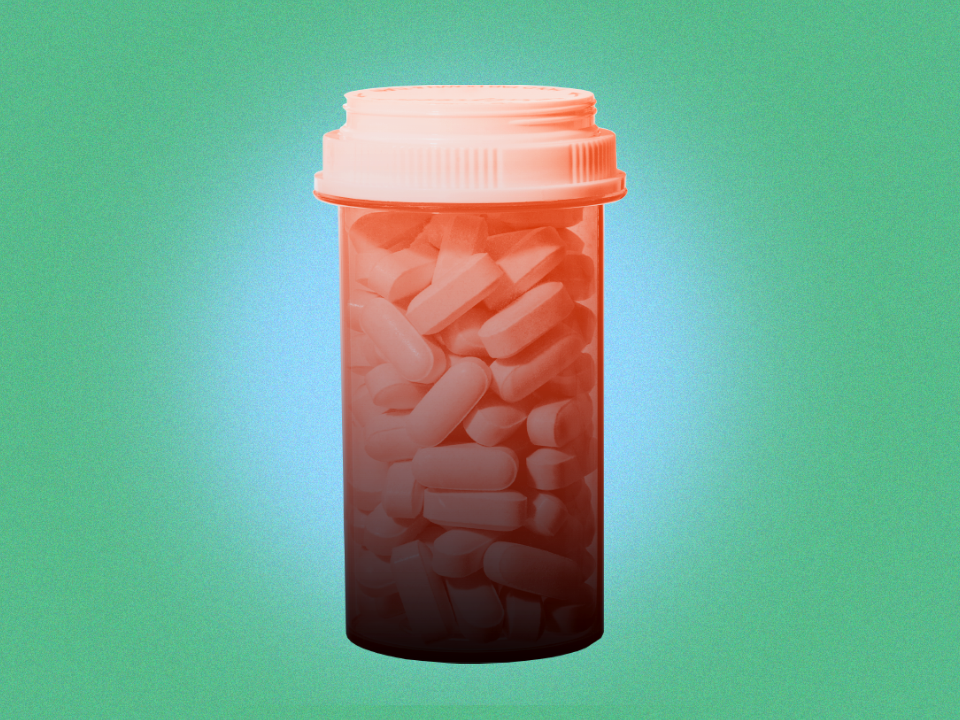Why Are So Many Adults Getting an ADHD Diagnosis?
A very thorough investigation into this “trend.”
Between the commercials for ADHD meds on your fave podcast, the constant flow of ADHD content on TikTok, and maybe even your friends sharing their new ADHD diagnosis, it seems like all of a sudden everyone is out here dealing with attention-deficit/hyperactivity disorder (ADHD).
And there’s data to back that up. Between 2007 and 2016, research suggests that the prevalence of ADHD in adults increased by 123%, according to a 2019 study. And, TikToks aside, there’s anecdotal evidence too: 26.5% of readers polled in March 2021 by the ADHD magazine ADDitude reported that they’d received a formal diagnosis just within the last year. Plus, roughly 11% said that within the last year they started to suspect they had ADHD but hadn’t had an evaluation yet.
If you’re now worried that there’s a twindemic of ADHD going on here, take a breath. This doesn’t mean that ADHD is suddenly striking adults at random, but that more and more people aren’t getting diagnosed with ADHD until they’re an adult. In fact, in order to be diagnosed with adult ADHD, you have to have had at least some symptoms that were present before the age of 12, says J. Faye Dixon, PhD, clinical psychologist, professor, and researcher at the UC Davis MIND Institute. To get an accurate diagnosis, Dr. Dixon says, sometimes a mental health professional will ask a parent, guardian, or older family member for some insight on how long a person’s symptoms have been going on.
As for why adult ADHD is being detected and diagnosed more often, there are multiple factors at play. Here, we’ll dig into what experts think is likely behind the spike.
Experts now know more about the signs and symptoms of ADHD.
In 2013, the Diagnostic and Statistical Manual of Mental Disorders (DSM-5), which is the handbook medical professionals use to diagnose mental health conditions, broadened the criteria for diagnosing ADHD. That’s when the three more inclusive subtypes of ADHD (predominantly inattentive type, predominantly hyperactive-impulsive type, and combined type) were introduced, according to a report published in the journal Neuropsychiatry. The DSM-5 also reduced the number of symptoms required for adolescents and adults to be diagnosed, upped the age of first symptom onset requirement (or the age when symptoms of ADHD first begin) from 7 to 12, changed the severity of the symptoms from “clinically significant” to “[reducing] the quality of social, academic or occupational functioning,” and made a few other tweaks that make the barrier to getting an ADHD diagnosis less strict overall, per that same report.
Those changes have been especially helpful for identifying ADHD in women and people of color, since earlier diagnostic criteria and ideas about the condition were centered around white, hyperactive young boys, explains Michelle Frank, PsyD, clinical psychologist and author of A Radical Guide for Women with ADHD. Since the criteria has broadened, adults who experienced symptoms of inattention (like failure to follow through on tasks or difficulty staying organized) but didn’t necessarily fit the (more limited) mold for ADHD growing up are now realizing they might actually have the condition after all.
ADHD TikTok exists.
Both experts say over the past few years they’ve seen an increase in inquiries from people who see posts on social media and are inspired to seek out an ADHD diagnosis. As we’ve established, one of the biggest platforms for ADHD-related info is TikTok, where videos with the hashtag #adultadhd have over 269 million combined views. And while mental health info on social media definitely brings its challenges like misinformation and inaccurate self-diagnoses, it's also been a positive force when it comes to spreading awareness about adult ADHD, says Dr. Frank. “People are really normalizing and humanizing neurodiversity in general [on social media]. And for folks with ADHD that is incredibly healing,” she explains. (JFYI: If you think you have a mental health condition based on something you’ve seen on social media, keep in mind that you need a formal diagnosis from a professional in order to be sure.)
The pandemic may have exacerbated people’s symptoms.
While there isn’t concrete data out yet about how the pandemic has impacted folks with ADHD and the rate of diagnosis, Dr. Frank says it seems to have inspired a lot of her patients to finally seek help with their symptoms. Without the structure of having to go into the office every day or the motivation of wanting to appear on-task in front of coworkers, it became harder for some who struggle with inattention to stay focused and get their work done while working from home, adds Dr. Dixon. Basically, there was a subset of people who were masking or functioning well enough within the structure of a regular 9-to-5, but when the pandemic hit, they had a much more difficult time managing their symptoms. This likely contributed to an increase in ADHD diagnoses as people sought to get their symptoms under control in the new normal (though we can’t totally say for sure till there’s data to back this up).
Parents of kids with ADHD are getting diagnosed.
One of the most common ways adult ADHD is diagnosed is that parents sit in on their children’s evaluations and realize they experience some of the same challenges, they’ve just never had a label for it, says Dr. Dixon. That makes sense since research suggests that there’s a genetic component to ADHD, according to the National Institutes of Mental Health (NIMH). So it’s not unlikely that parents of kids with ADHD could also have the condition. And because ADHD diagnoses in children between the ages of 5 and 11 increased by 26.4% between 2007 and 2016, per that same 2019 study, it’s definitely possible that parents bringing their children in for evaluations ended up walking away with their own ADHD diagnosis.
Telehealth companies are making it easier than ever to get an ADHD diagnosis.
Online therapy services and direct-to-consumer prescription companies make it possible to speak to a psychologist or psychiatrist and get a formal diagnosis for a mental health condition without even leaving your house. While there’s not enough data to say whether the existence of these services has led to an increase in adult ADHD diagnoses yet, it’s certainly possible, says Dr. Dixon. After all, if you don’t have to deal with the barriers that come with seeking traditional mental healthcare, like finding a provider that accepts your insurance or high out-of-pocket costs, you can get a diagnosis much faster, she explains. While these options are certainly more convenient, it’s also possible that the lower barrier to entry could lead to more people getting diagnosed or misdiagnosed with ADHD. So Dr. Dixon is still a fan of seeking an IRL evaluation for a diagnosis if at all possible for you, especially if you’re hoping to be treated with a prescription.
TL;DR, it might seem like everyone and their mom is being diagnosed with ADHD lately, but experts say that’s mostly because doctors are getting way better at spotting how it can show up in adults. And if that means more people are getting the care they need, then that’s pretty good news.
Wondermind does not provide medical advice, diagnosis, or treatment. Any information published on this website or by this brand is not intended as a replacement for medical advice. Always consult a qualified health or mental health professional with any questions or concerns about your mental health.




